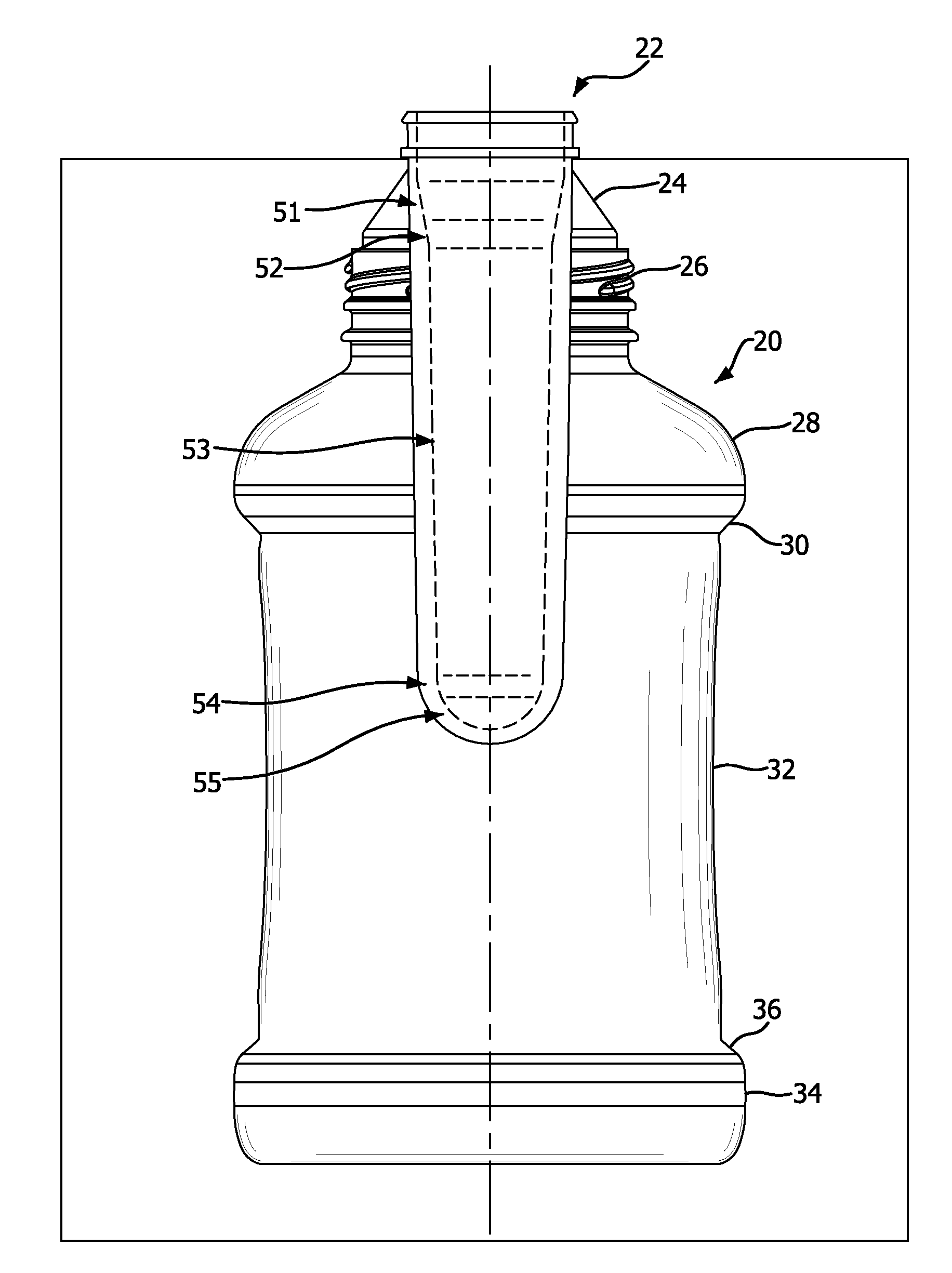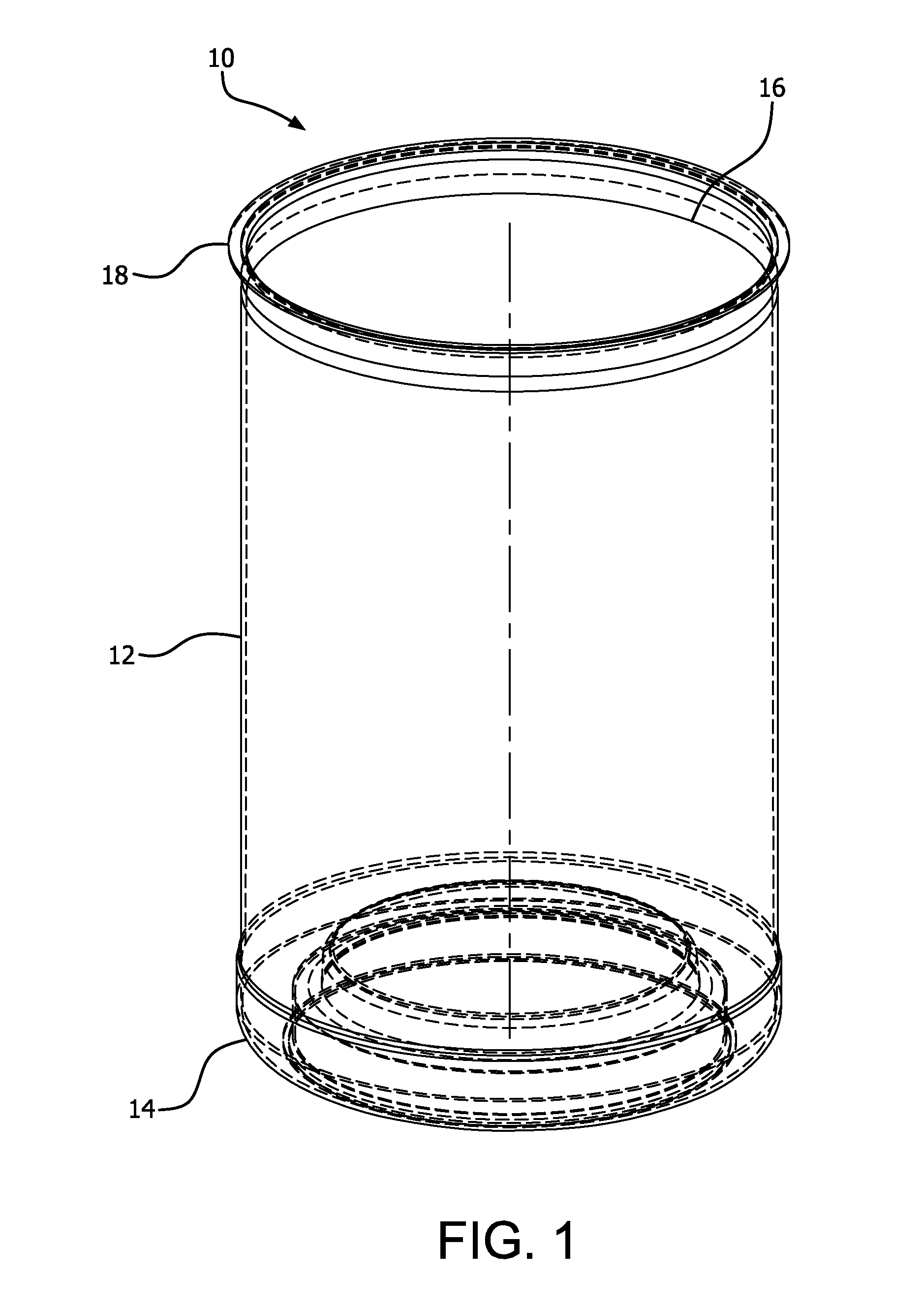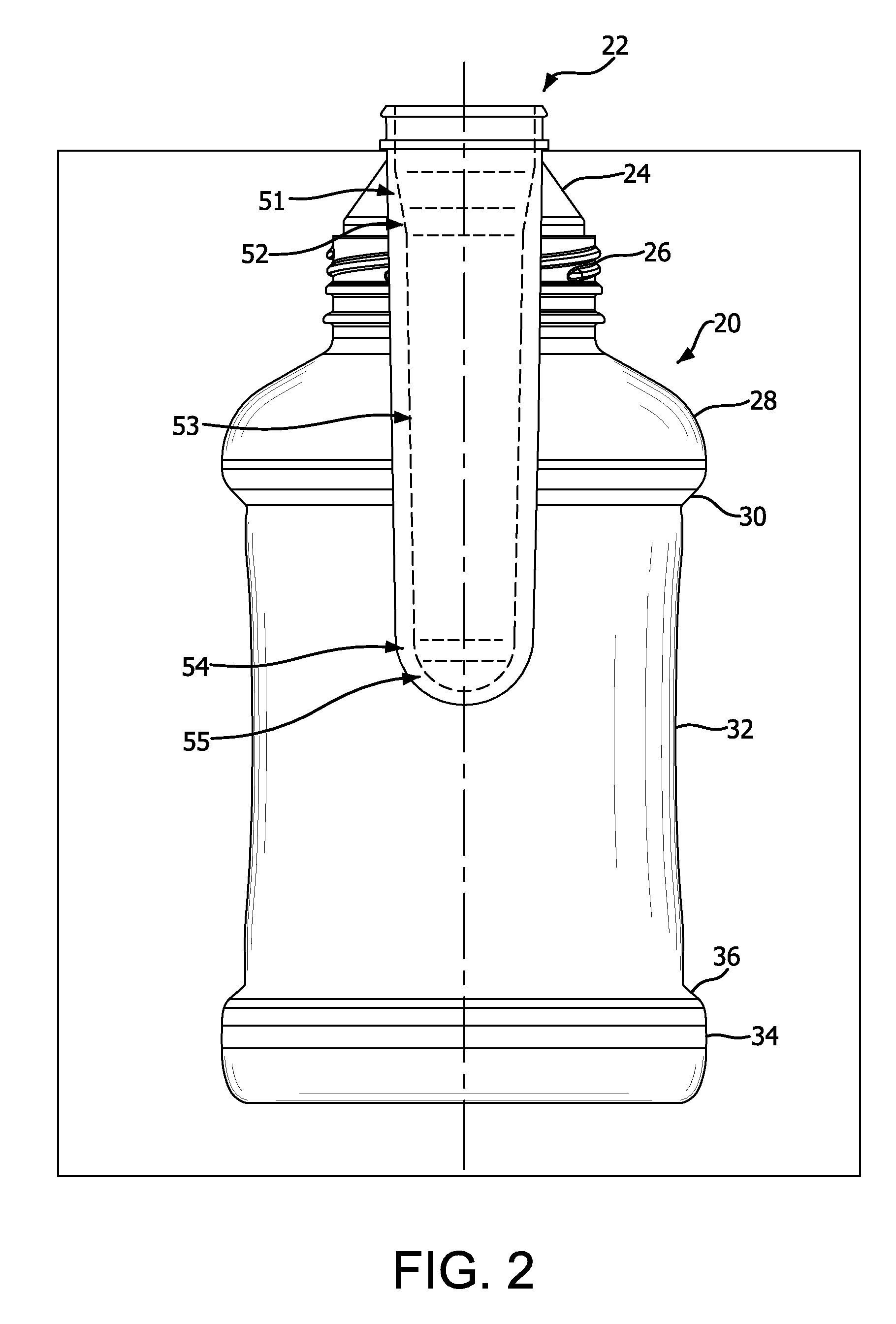Pet containers with enhanced thermal properties and process for making same
a technology of thermal properties and plastic containers, applied in the field of enhanced thermal properties of plastic containers, can solve the problems of affecting the shape of plastic containers, affecting the processing efficiency of food products, etc., and achieve the effect of improving thermal properties
- Summary
- Abstract
- Description
- Claims
- Application Information
AI Technical Summary
Benefits of technology
Problems solved by technology
Method used
Image
Examples
embodiment
Dual Blow Mold Embodiment
[0063]In another embodiment of the present invention, PET containers having improved thermal properties are made by a dual-blow process that employs two blow stations in series, with each blow station having mold walls defining a cavity. In describing this embodiment, the molds will be referred to as the first blow mold and the second blow mold. Thus, in this embodiment, the present invention provides an integrated system for blow molding a PET container comprising, in line: an injection molding station for forming PET preforms, wherein each of the PET preforms is defined by a sidewall defining a cavity, an end wall, and an open end; a first blow molding station comprising a first mold defining a first blow cavity of a first volume for receiving a PET preform from the injection molding station and blowing the preform into an expanded PET article against the first blow cavity, wherein the temperature of the first mold is higher than the glass-transition tempe...
PUM
| Property | Measurement | Unit |
|---|---|---|
| temperature | aaaaa | aaaaa |
| temperature | aaaaa | aaaaa |
| pressure | aaaaa | aaaaa |
Abstract
Description
Claims
Application Information
 Login to View More
Login to View More - R&D
- Intellectual Property
- Life Sciences
- Materials
- Tech Scout
- Unparalleled Data Quality
- Higher Quality Content
- 60% Fewer Hallucinations
Browse by: Latest US Patents, China's latest patents, Technical Efficacy Thesaurus, Application Domain, Technology Topic, Popular Technical Reports.
© 2025 PatSnap. All rights reserved.Legal|Privacy policy|Modern Slavery Act Transparency Statement|Sitemap|About US| Contact US: help@patsnap.com



